Picture a desolate shrubland, ashen and dry as a bone – skeletal, in every sense of the word. A wilderness studded with pallid Tamarisk trees and jagged saline deposits as sharp as daggers.
The hostility of the equatorial sun, coupled with the rising sand caused by the Shamal winds, strips the landscape of life and color. Water, in its consumable state, is a scarce resource around these parts. The humidity, on the other hand, is asphyxiating – a cruel contrast.
Against all odds, however, there is one creature that thrives in these nigh-inhospitable conditions. Meet the phantom of the Bahraini desert and the subject of my eternal fascination – the Egyptian Nightjar.
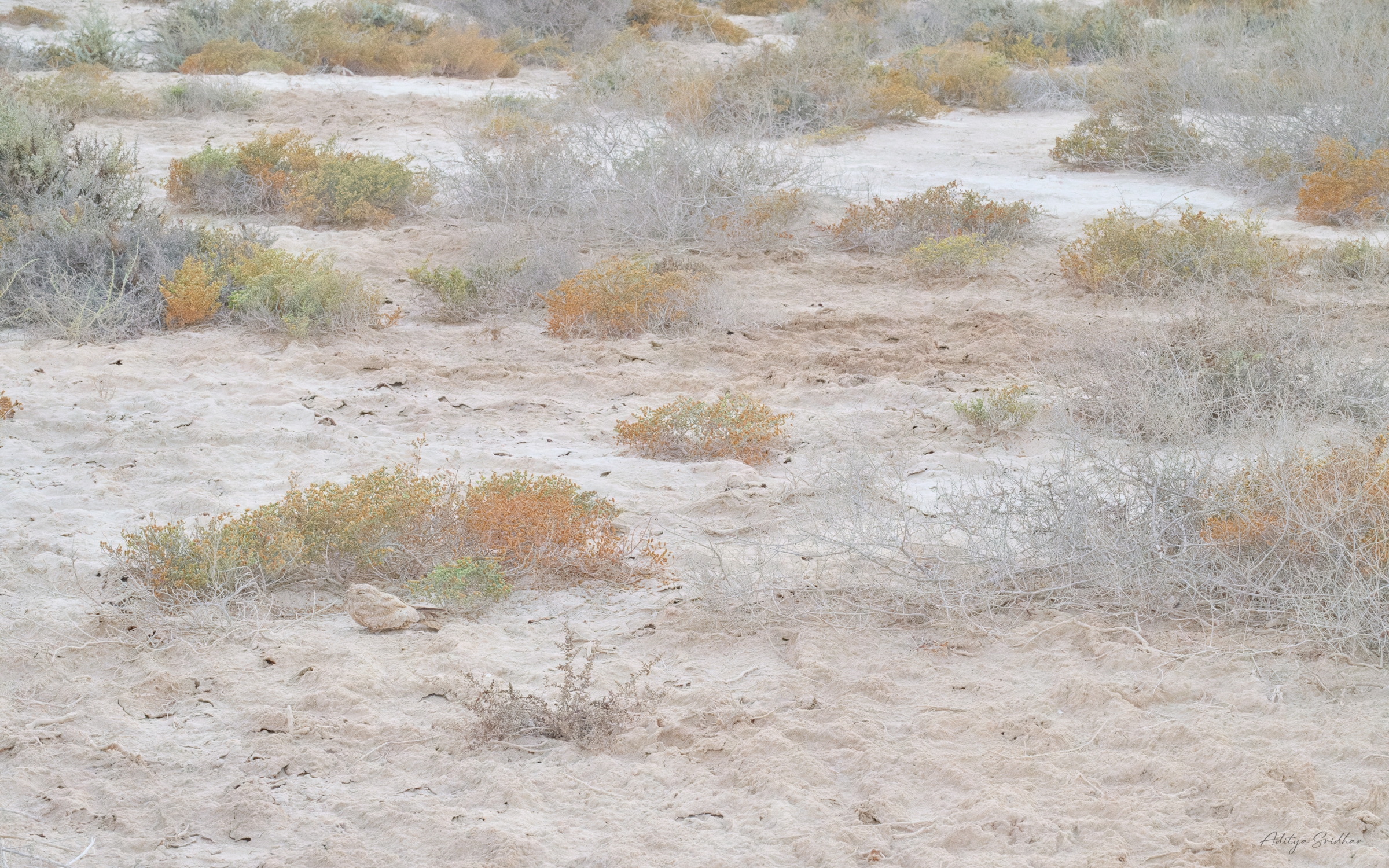
If I can even find one, that is…
You see, my strategy, at the heart of it, is quite simple – look under every single shaded bush in the vicinity, shaded being the keyword in this case. As the mercury rises, these mysterious birds abandon the safety of their well-guarded hideouts, seeking increasingly open spaces to roost. These sites are usually demarcated by the presence of Tamarisk and Sagebrush, and limestone outcrops.
What throws a spanner in the works, however, is the fact that the color, tone and pattern of plumage can vary significantly between individuals of the same species. Dark-morph nightjars are usually found in the shade of tall trees and shrubs, while the lighter, paler variants blend seamlessly into the white desert sand. More on this in just a little bit.
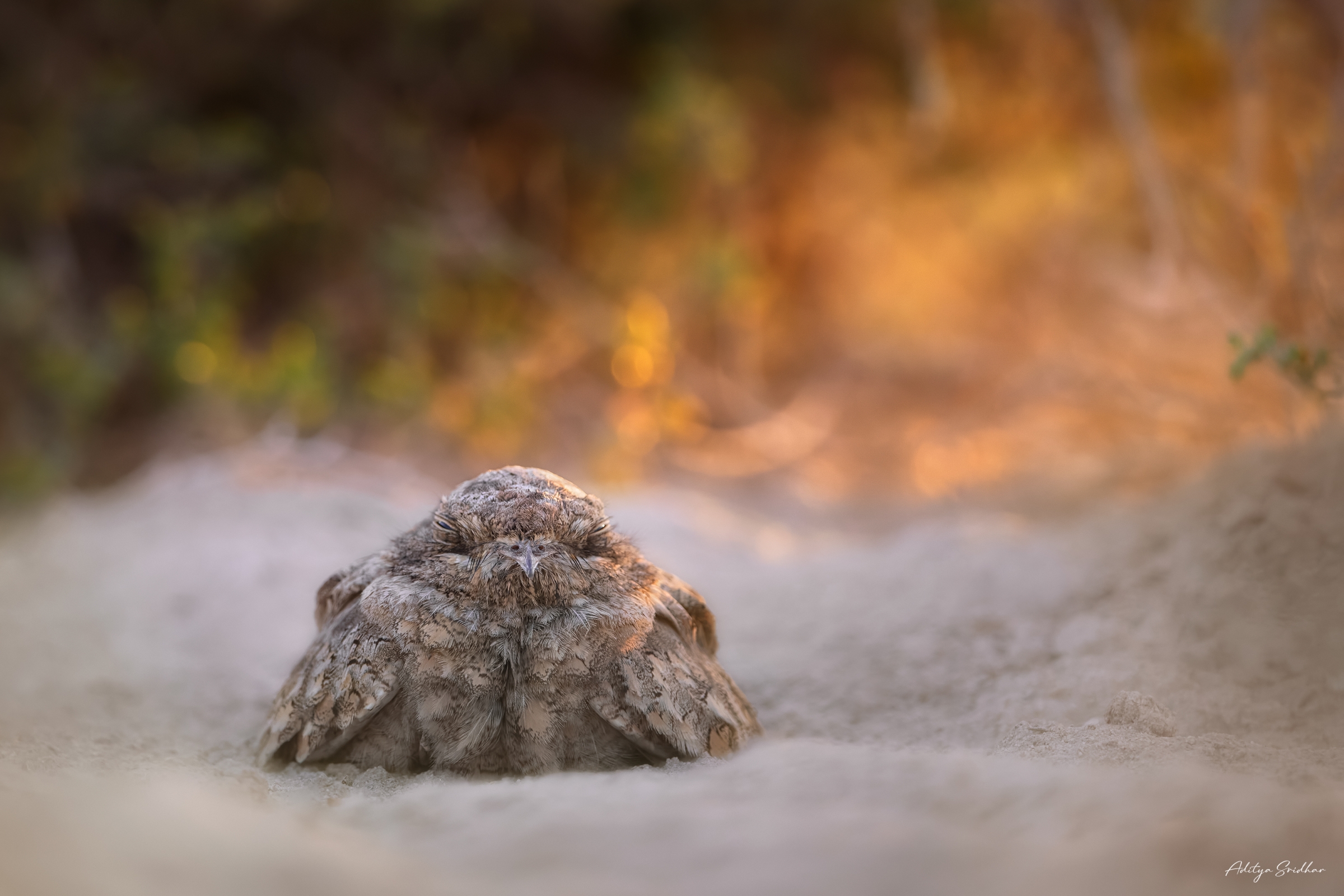
The desert terrain, too, presents a unique challenge. The undulating nature of the landscape and the density of the vegetation makes navigation quite strenuous, and approaching these birds requires a lot of patience and mental mapping.
I take note of my surroundings, identifying a possible route to my target, and drop to ground level. I move slowly, conscious of my pace and positioning, but accidentally crawl over a colony of fire ants and a thorny bush in the process. With the sun dangling right above a distant tree-line, however, I scramble to get into position. Eyes burning from sweat and dust, I peer through a tunnel of thorns and Amaranth to get a brief insight into the life of this enigmatic bird.
But this is just the beginning. Let’s dive a little deeper into the world of the Egyptian Nightjar.
Evolution.
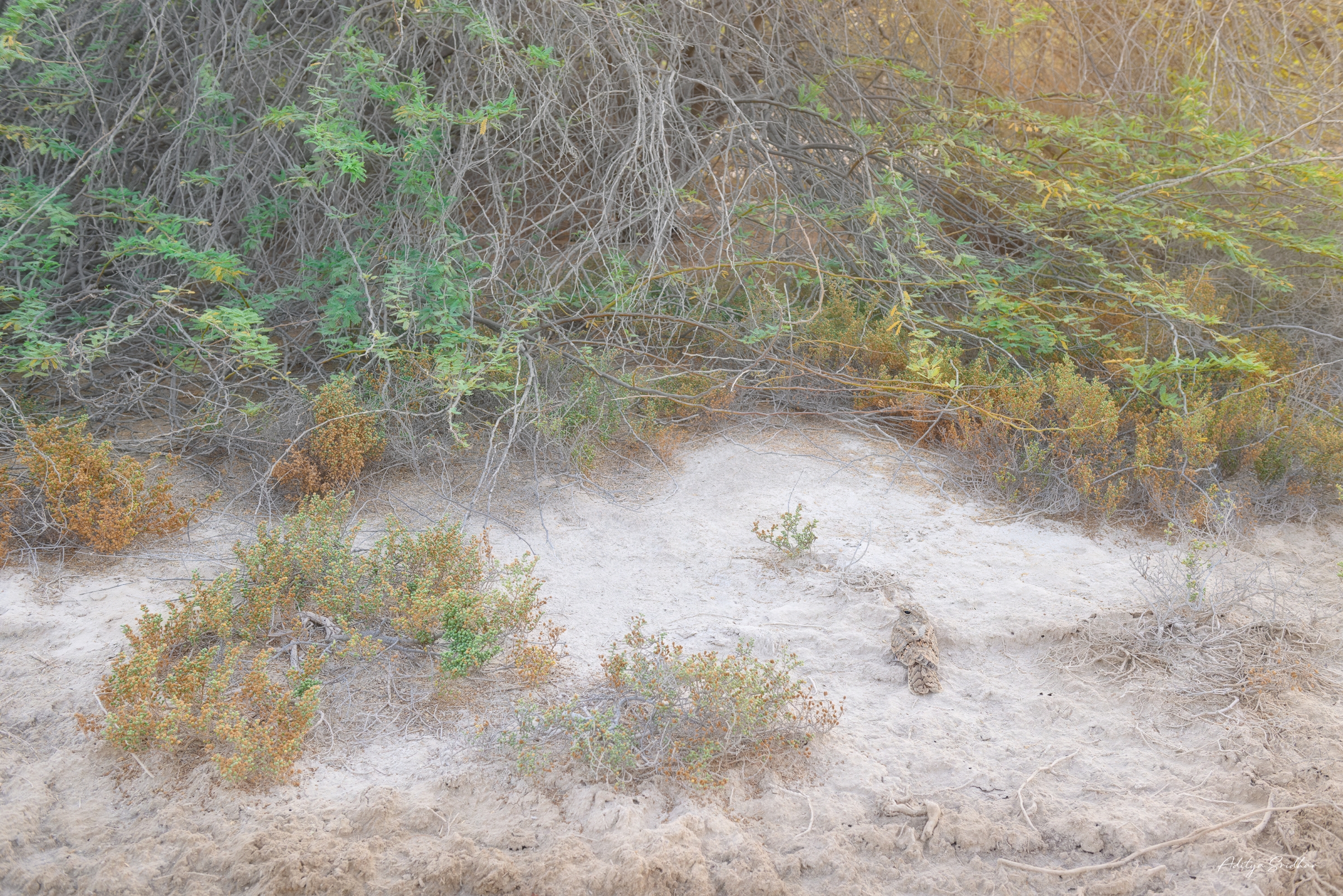
“If I were a nightjar, where would I be?”
It’s a question I asked myself innumerable times in an effort to reverse-engineer the thought-processes of this under-documented species. In retrospect, I like to believe that was the catalyst that led me down the rabbit hole of wanting to learn more about their secretive lives. There is a considerable lack of literature available on the Egyptian Nightjar, so I’d like to try and impart every bit of knowledge I’ve gained through my own experiences with these birds.
Before we get to the meat of this topic, however, I’d like to briefly touch on an idea that forms the backbone of my observations and research.
Sonder, as a philosophical concept, is one I find myself reflecting upon on a daily basis. It’s the realization that every living being around us has a life that’s just as vivid and complex as our own – be it the smallest of insects, the largest of whales or even random passersby on a busy street.
Now let’s deconstruct that concept and apply it to the current context.
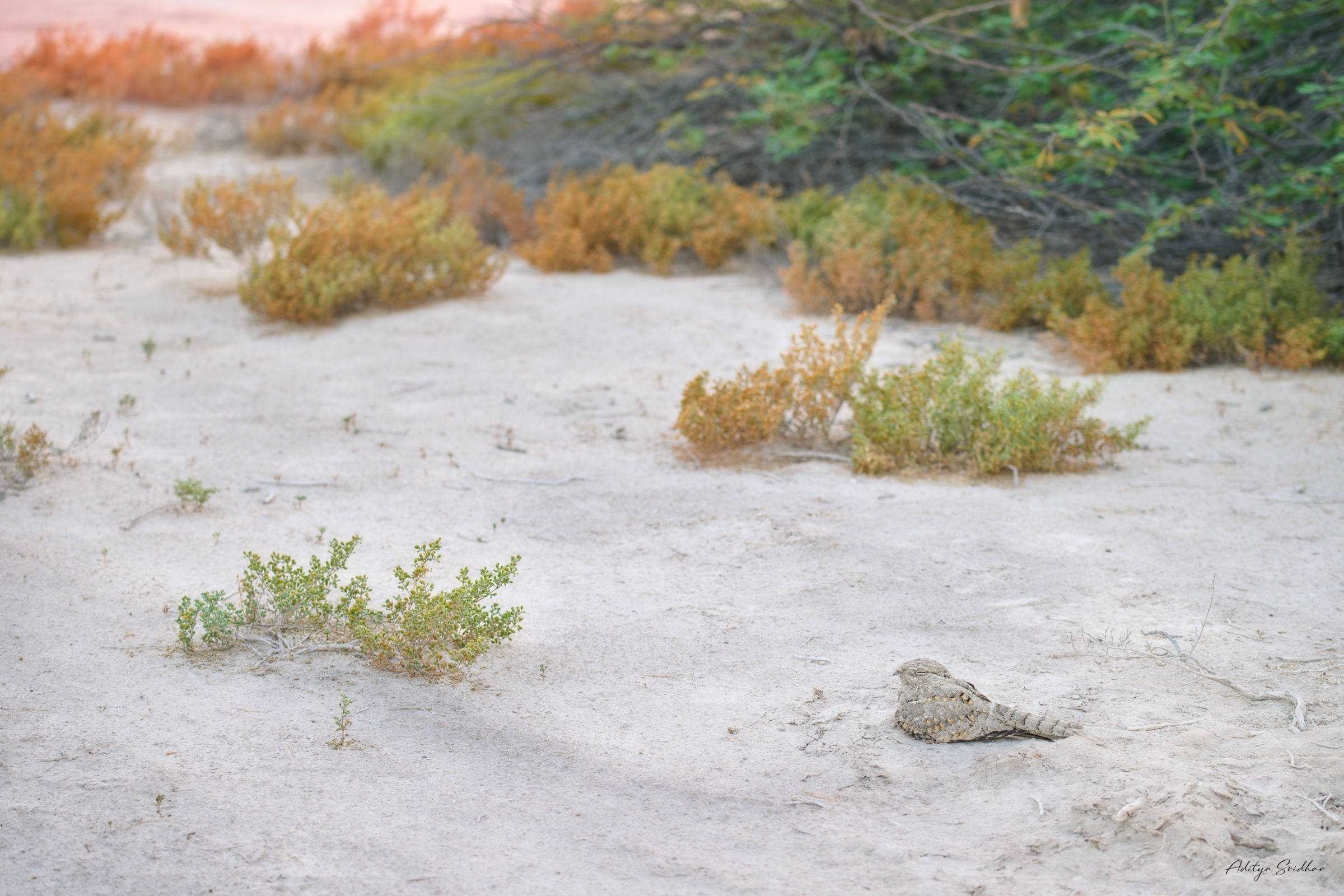
Nightjars, over millennia, have evolved to develop their most well-known characteristic – their variegated plumage – to mimic elements of their surroundings, but that’s only half the story.
What isn’t spoken about nearly as much as it probably should be is the fact that individual birds use their own judgement to pick roosting spots based on the patterns, tones, and colors of their plumage. Darker birds seem to prefer the deep shadows of large trees and shrubs, while paler birds (such as juveniles and sub-adults) are able to blend effortlessly into the pearly-white desert sand.
But it doesn’t end there. Some nightjars even use dust-bathing as a tool to manipulate the tones and colours of their feathers to better suit their immediate environment.
This is consistent decision-making based on logic and rationale.
This is perpetual development and adaptation based on an individual bird’s thoughts and experiences.
This is self-knowledge on a species-wide scale, if that makes sense.
Isn’t that just mind-blowing?
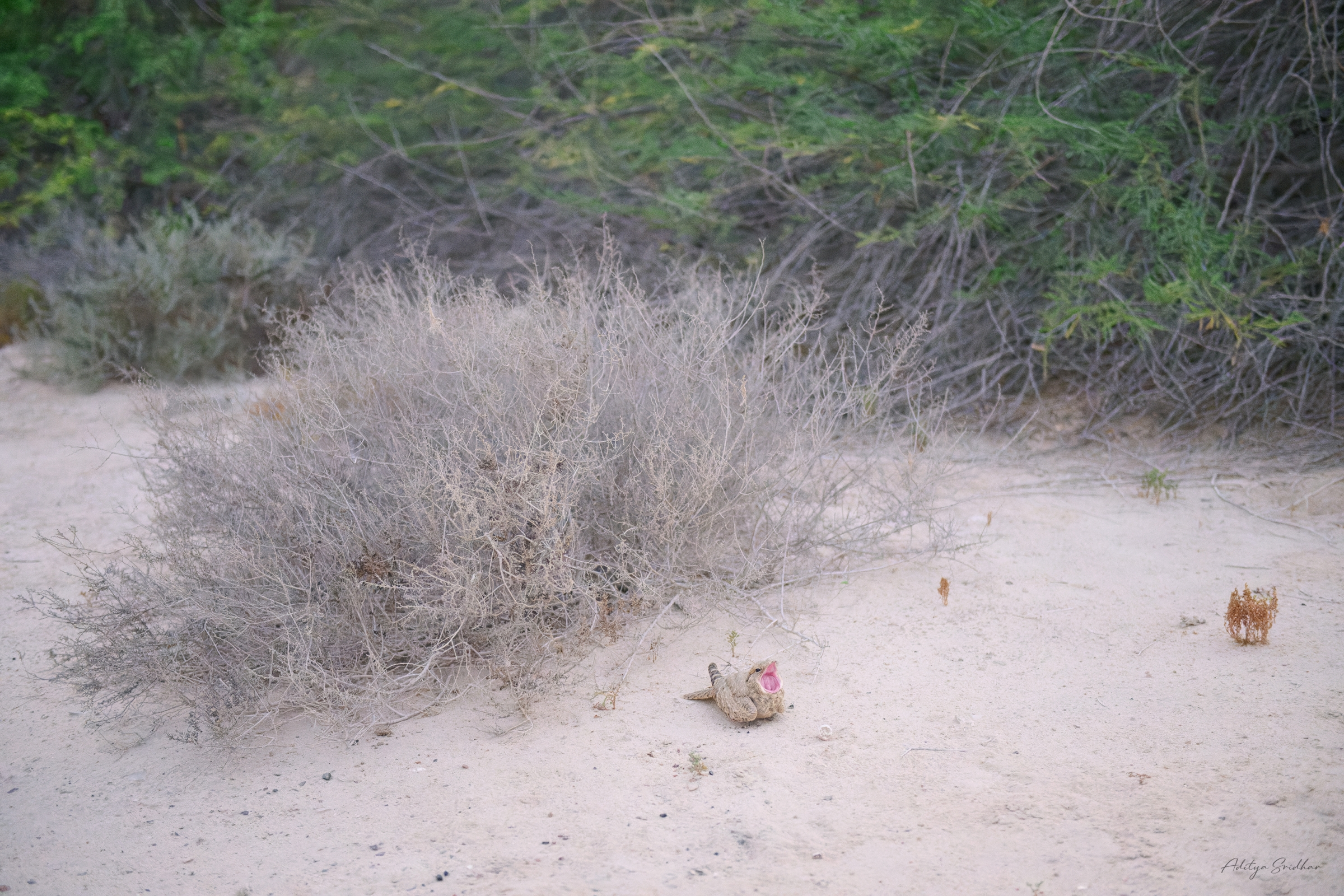
Heat.
The Sun – a symbol of hope to a few, a comfort to many, and the primary sustainer of life on this planet.
Yet, you’d be forgiven for thinking it to be the cause of all suffering, the bringer of death and destruction.
The sand that shimmers in the glow of the setting sun is a sign as deadly as it is mesmerising. In the scorching heat, the Scrub-robins croak weakly – a far departure from their usual sing-song selves. The once-aplenty Larks are now a scarcity. In-fighting amongst the Crows and Mynas turn fatal. The landscape is decorated by the twisted spines of deceased cattle and the torn wings of Cattle Egrets.
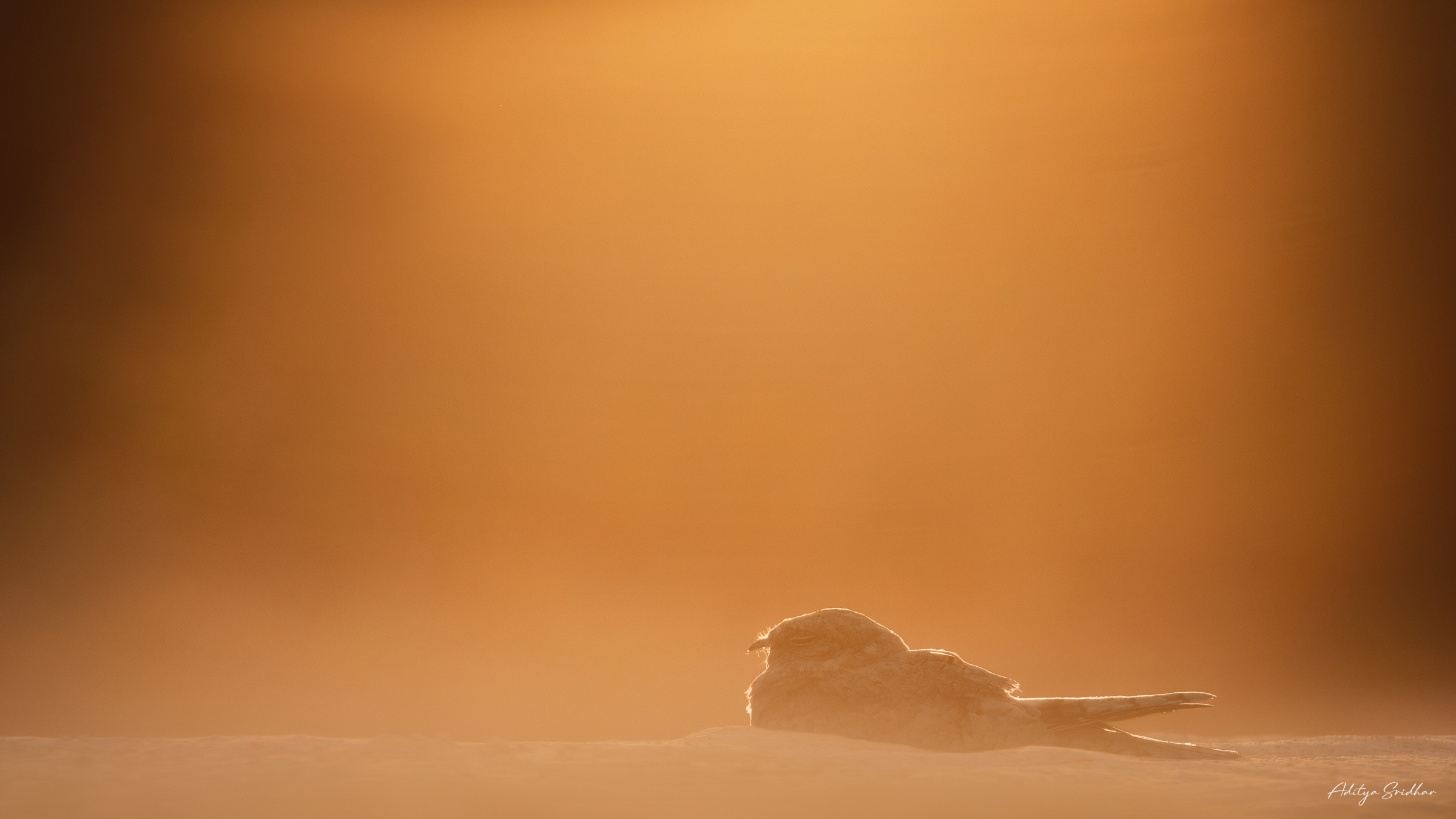
Despite the harshness of the desert, however, the nightjars continue to live as unfazed as ever.
How is it that they’ve managed to conquer this, seemingly, uninhabitable biome?
Well, the beauty of the solution lies in the simplicity of it.
As I’d briefly mentioned earlier, Egyptian Nightjars seem to use dust-bathing not just as a way to cool off, but also as a tool to manipulate the tone and colour of their plumage to better blend into their surroundings.
Through the dispersion and layering of dust and sand, even an individual with relatively dark feathers is able to, to a certain extent, conceal itself in a vast, white desert. Dust-bathing also helps these Nightjars ward off parasites, of which there are many, and enables them to mask their scent from potential threats such as Barn Owls, and feral cats and dogs.
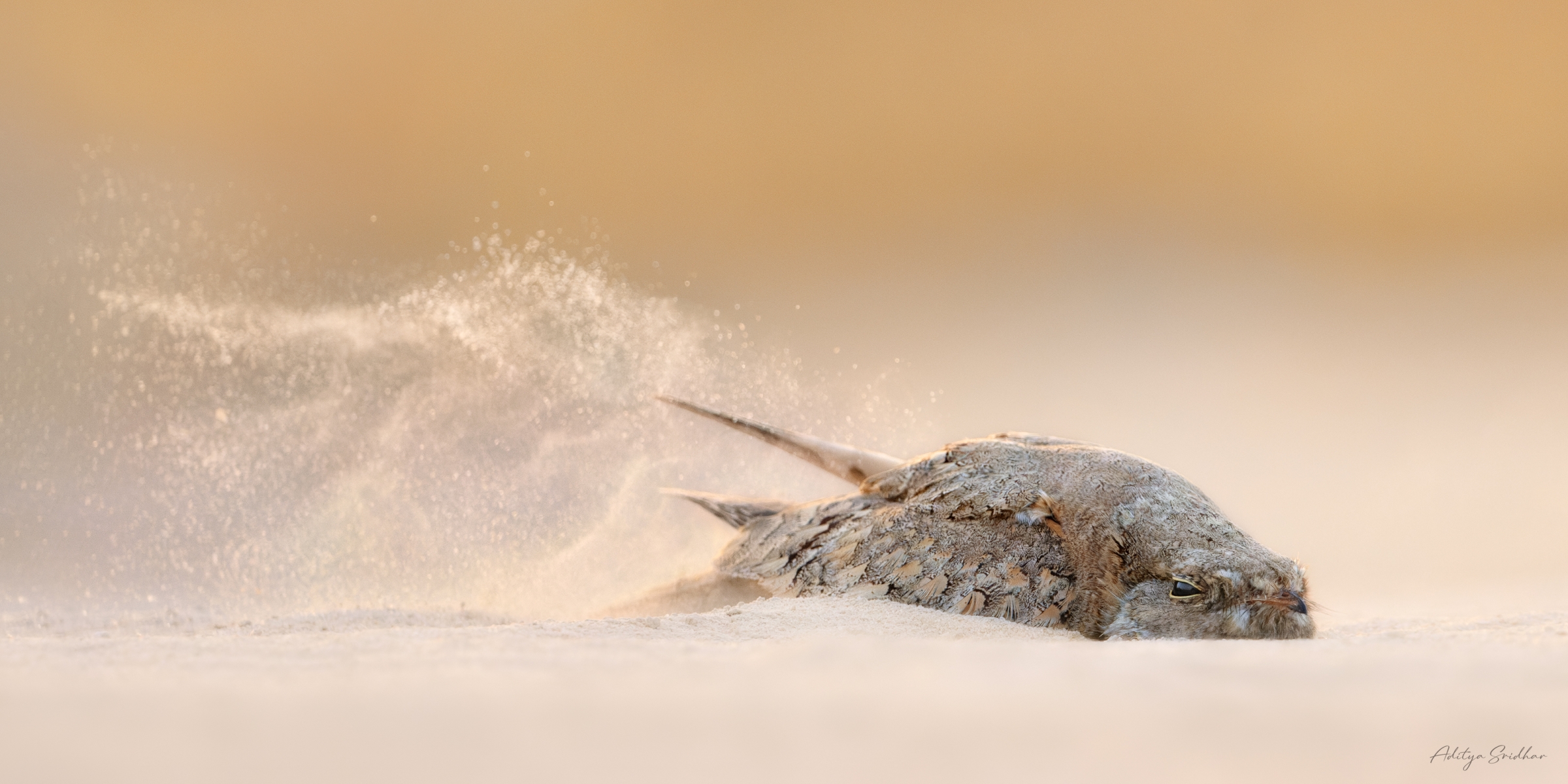
At sunset, the Nightjars would gather and, almost simultaneously, engage in dust-bathing, perhaps suggesting there’s also a social facet to this behaviour. That’s purely anecdotal speculation, but I believe there might be an element of truth to that assessment.
Birds of a feather…
There are many qualities attributed to nightjars (and most nocturnal critters, I suppose) – one of them being their, seemingly, solitary nature. While that statement may be true on some level, in my opinion, it fails to explore the depth of these birds’ social and inter-personal relationships.
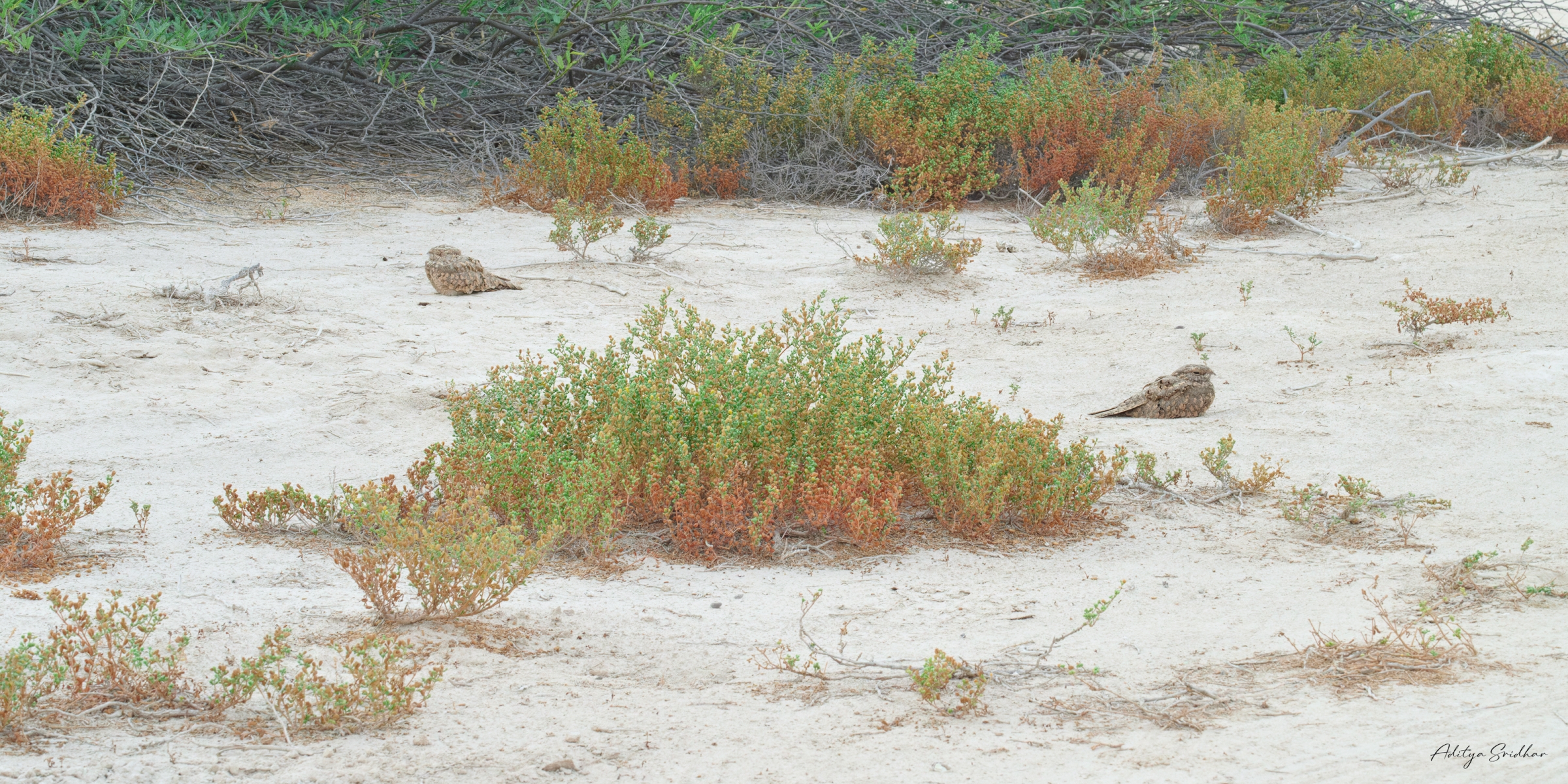
During the breeding season, in particular, Egyptian Nightjars seem to socialise quite actively even outside of their immediate familial circles. As previously mentioned, dust-bathing seems to be one of the primary activities that these birds engage in to communicate and bond with other individuals.
Towards the end of the breeding cycle when the young ones start to fledge and explore their surroundings, they are monitored and guided by adult birds. Juvenile nightjars are, much like the fledglings of most other bird species, exuberant and curious, prompting watchful eyes and an abundance of caution from their parents.
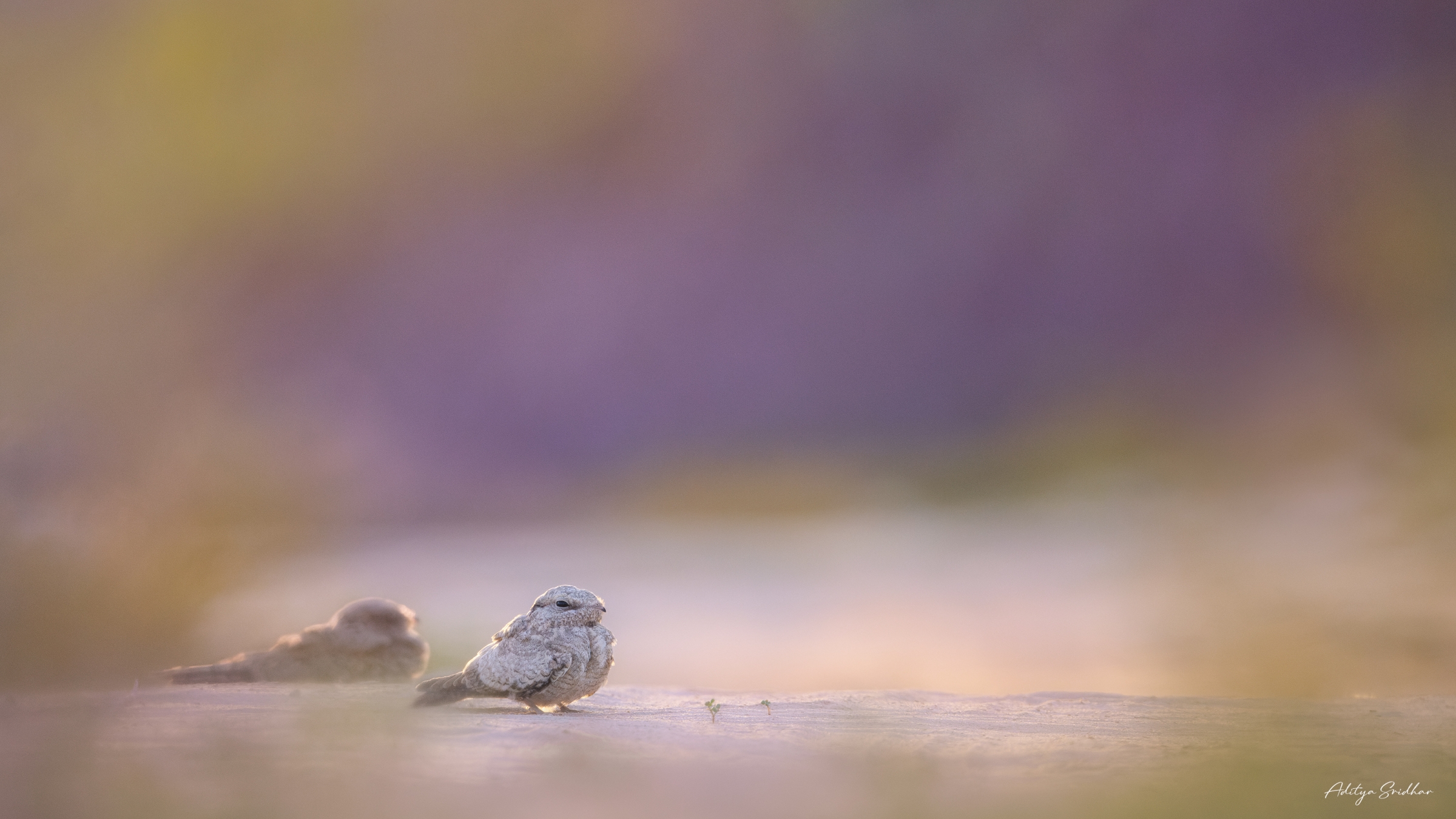
As the sun dips below the horizon, a rather large flock of over 15 individuals gather to perform their pre-hunt rituals – wing-stretches, yawns, dust-bathing – with the juveniles observing closely. As the adults take flight, the fearful, inquisitive eyes of the younger birds dart around, unsure and helpless.
Eventually, their curiosity gets the better of them; one of the juveniles flaps its wings powerfully in a bid to achieve lift-off. It’s a partial success, but there’s still some work to be done. Nevertheless, it’s an activity that would keep the fledglings engaged through the night while the adults hunt above.
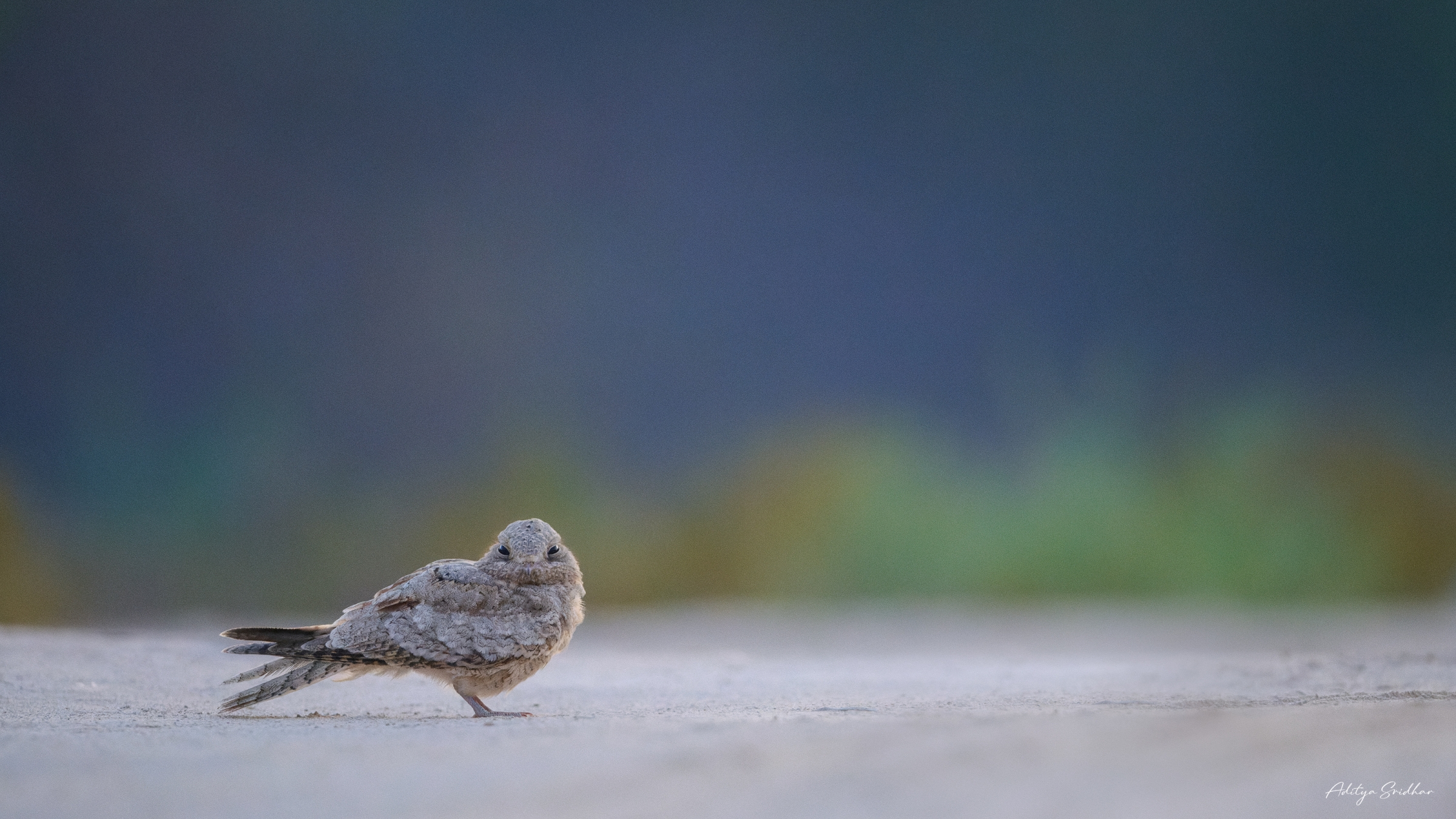
Alien.
When photographing birds, I often plan my shots based around the idea of showcasing a species’ most definitive characteristics in a, hopefully, creative way. However, I also like to go in the complete opposite direction, at times, and try to capture traits that a species is generally not very well known for. One of those behaviours is the Egyptian Nightjar’s yawn.
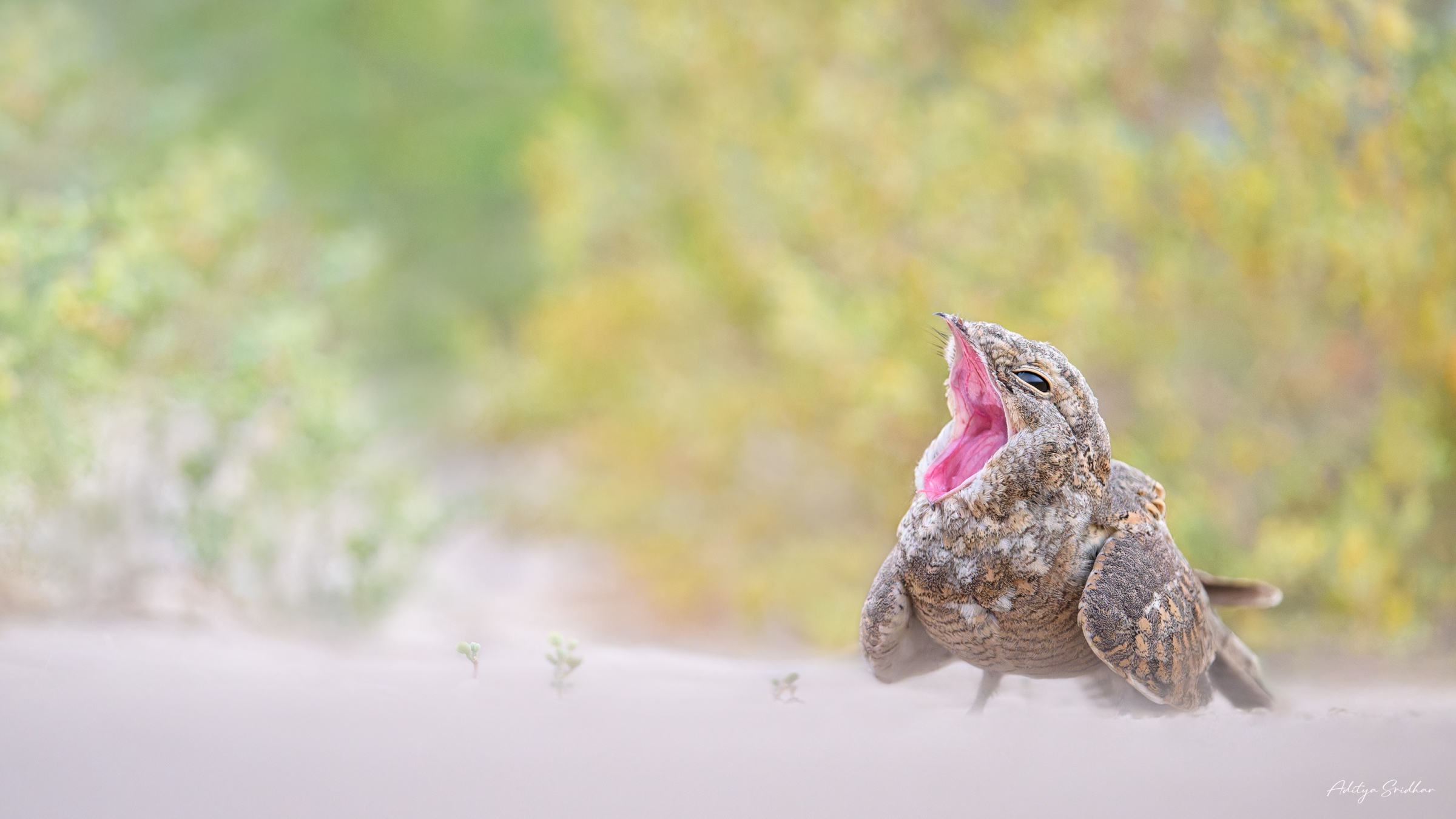
Unlike wing-stretches and dust-bathing, I’m not quite sure there’s an explicit purpose to the yawn other than the obvious show of tiredness and fatigue. There’s something special, however, about the brightly coloured mouths of these rather dull, inconspicuous birds. Contrast, I suppose, exists in everything.
It’s an image that holds a very special place in my heart. While I’m guilty of describing nightjars as being cryptic and reclusive, they are actually incredibly fun birds to be around and photograph. The dry habitat, the poor lighting and weather conditions, and the birds’ coloration marry to create an absolutely nightmarish scenario for photography, but it’s this very challenge that I relish and it’s exactly what keeps me driving to spend more time observing this species.
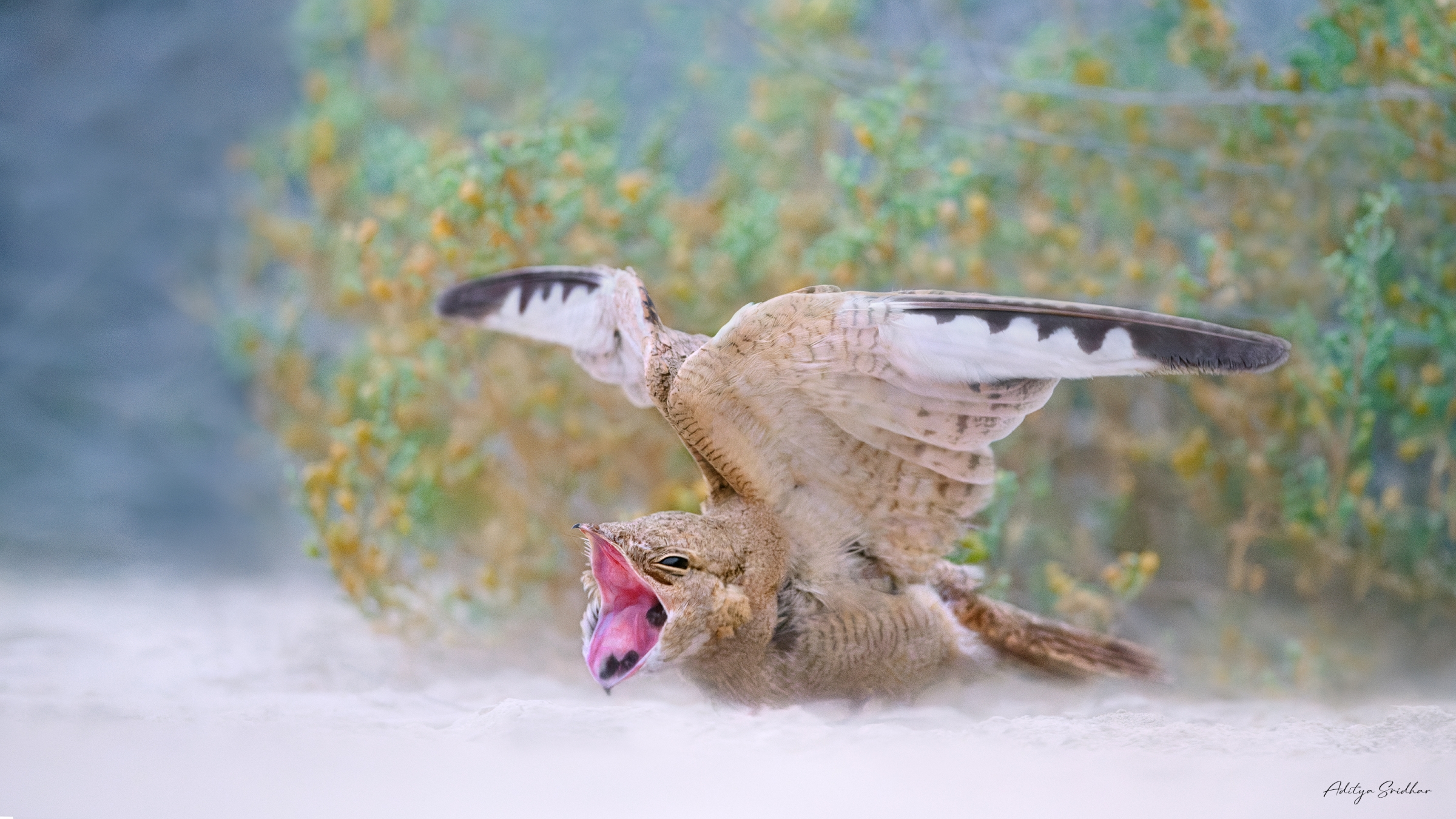
And the many hours spent out in the field often throw up some unique, bizarre experiences.
Pellet regurgitation, as you may already know, is pretty well-documented in species such as Owls, Kingfishers, and Herons, but it’s not something I’d ever expected to occur in Nightjars. The way it works is quite simple – the indigestible components of a bird’s diet such as bones and fur are sifted, processed, and compressed into ovular masses which are later regurgitated. In this case, the pellet matter seemed to be the exoskeleton of a large insect, although it was too dark at the time of capture to take a closer look.
This image, itself, is a composite of 2 frames shot in the same burst sequence. I chose to stack the images in order to achieve a slightly better wing position.
Flight.
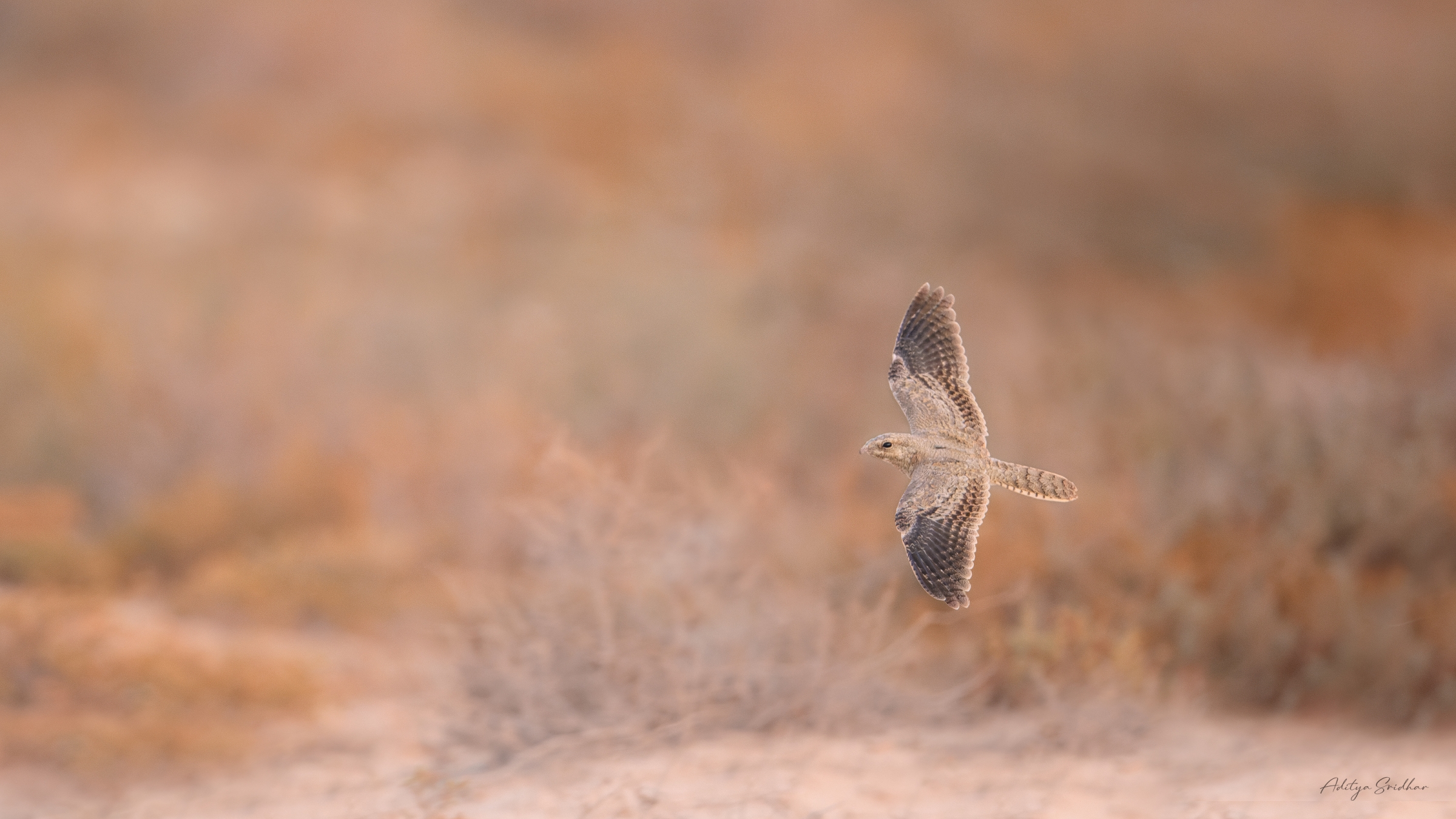
Apart from their uncanny ability to blend into their surroundings, the other detail that took me by surprise was just how massive these birds’ wings are in relation to their body.
Their large, powerful wings enable them to perform aerial acrobatics like those you’d see from a Swallow, with all the subtlety and silence of an Owl – a truly masterful adaptation. Their mimicry of a small raptor extends beyond just that detail, though, as confirmed by the alarm calls blared out by Bulbuls and Mynas when a nightjar takes flight in daylight; their barred underwing patterns bear a striking resemblance to those found on a Kestrel or Sparrowhawk.
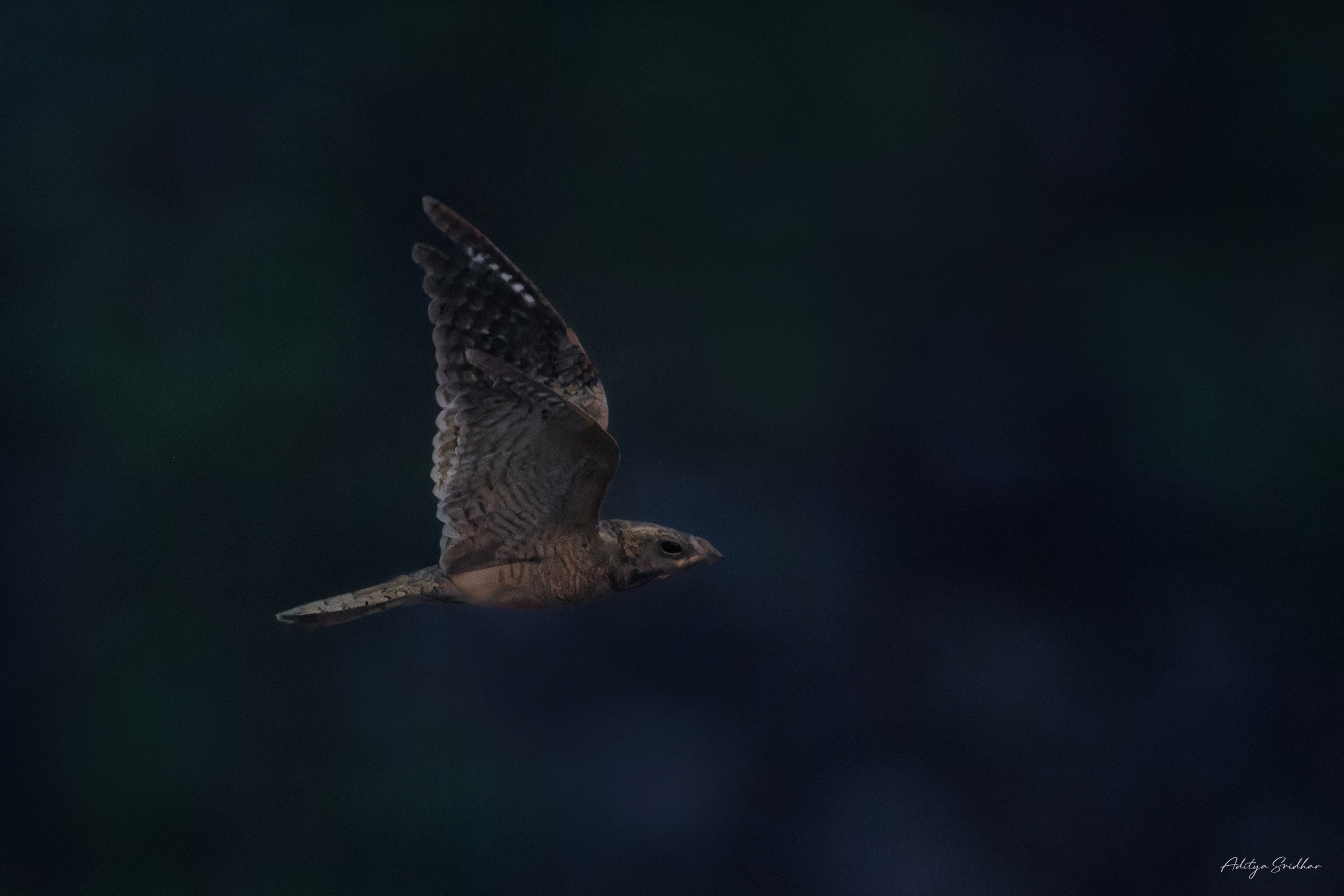
With that being said, the idea of photographing these birds on the edge of daylight as they dipped and rolled in pursuit of prey is borderline-absurd, even for me. There just isn’t enough light to track these critters as they emerge from their daytime roosts, and to even see them with my bare eyes was unbelievably challenging.
It teeters on the verge of being impossible, but I believe it might just work if all the elements align at the right moment – the bird’s flight path, wing position, wind direction and, of course, my own performance.
I can’t wait to go back and give it another shot!
Last Light.
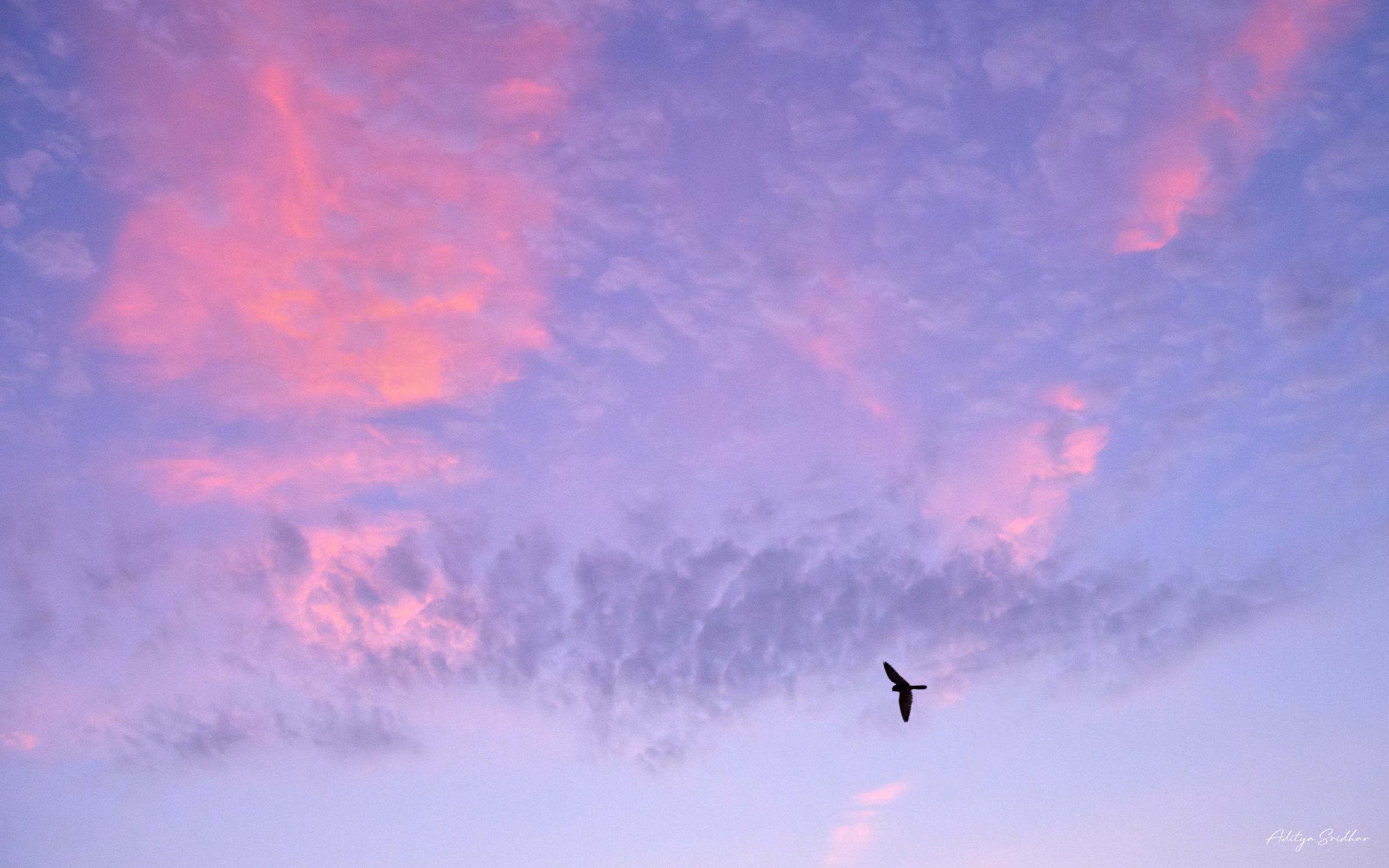
It’s hard to put into words the effect these Egyptian Nightjars have had on me without diluting the significance of the overall experience.
To be able to observe, capture, and grow alongside these birds has been the single most enriching experience of my journey as a photographer. There isn’t a single day I go without wishing summer would arrive sooner. Toiling in the high heat and humidity, even to the detriment of my own physical health, there is not a moment of regret in my memory. When the dust settles, my yearning for these nightjars only increases. It’s a strange, obsessive relationship that I have with these birds.
But let me add some context.
When I first, unknowingly, discovered this nightjar roost site back in the frigid December of 2021, it was already a site of immense ecological importance. It was the stop-over site for numerous migratory species such as the iconic Grey Hypocolius, Redstarts, Warblers, and Raptors; that section of this site has, since, been levelled for residential and commercial purposes.
The portion that does remain, like most other ecologically-significant locations in Bahrain, is afforded little to no legal protection. In its current state, it is a junkyard filled with metal scraps, plastic waste, and the remains of local livestock. If this piece of land goes, these birds will have no place to call home.
It is an eventuality I’ve yet to come to terms with. I don’t think I ever will.
Not while the nightjars rule the crepuscule.

